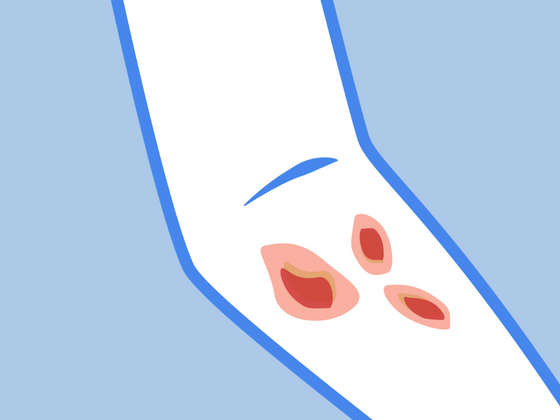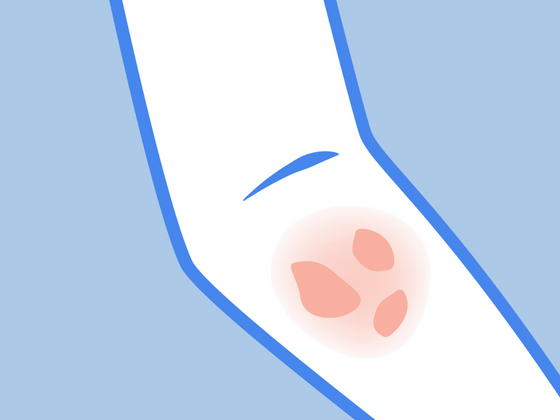Wool makes you itchy. Polyester gives you a rash. Tight-fitting clothing makes your skin red and irritated. You get a rash from trying on clothes. If these scenarios sound very real to you, you may be allergic to your clothes. Known as textile dermatitis, this occurs when your skin negatively reacts to the chemicals and specific fabrics used to make your clothing.
Read on for more details about textile dermatitis and discover some safe clothing alternatives you can start wearing today to avoid an allergic reaction or skin irritation.
If you are suffering from textile dermatitis, please bear in mind that we are in no way medical professionals. If you are experiencing severe symptoms or infections, speak to a medical professional as soon as possible.
What is Textile Dermatitis?
Textile dermatitis is a form of contact dermatitis. It typically occurs when your skin has a negative reaction to the clothes or fabrics it comes into contact with. Typically, the source of the problem is the fabric of the clothing itself or the fibers or chemical additives used in processing the fabric. This includes dyes, resins, detergent for sensitive skin, and other chemicals used to treat the clothes you wear.
What Does a Clothing Allergy Look Like?
Symptoms of textile dermatitis look similar to eczema and may benefit from eczema cream. The skin will become red, dry, scaly — and extremely itchy. While the rash may appear within hours of putting on your clothes, in some cases, it may take days or even weeks to appear.
Thankfully, symptoms are usually temporary, but it’s possible that some people will develop more severe reactions including:
- Trouble breathing due to shortness of breath
- Abdominal pain
- Runny or stuffy nose
- Skin tenderness
- Hands turning bright red in colour
In general, symptoms will develop in the folds of your skin or the areas that make contact with your clothing such as the crook of your arms, under your armpits, behind your knees, in the groin area, and in any place where clothing is tight.
What Causes Textile Contact Dermatitis?
While any kind of fiber can cause a rash, a polyester allergy and an allergy to latex are some of the most common causes of textile dermatitis. Other culprits include rayon, nylon, spandex, and rubber. Compared to natural fibers which tend to be more breathable, these fabrics are more tight-fitting, causing you to sweat more. In turn, this can aggravate a negative reaction.
The other source of the problem is the dyes or chemicals used to make the clothing. This can be anything from the resins used to make garments wrinkle-free to the button on your jeans touching your skin.
Since women are more likely to wear tight-fitting clothing, they have a higher chance of suffering from contact dermatitis. Those who tend to sweat more and overheat also have a higher likelihood of being affected.
Your workplace can also affect your skin. Those who work in humid or hot environments, such as kitchens, laundries, and bakeries are more at risk.
Finally, if you already have a skin condition such as eczema, your skin is already more sensitive. This is especially important for children who may need specialized eczema cream for babies. This increases the chance that your clothing may exacerbate symptoms, making clothing one of the top triggers for eczema flare-ups.
How to Prevent Contact Dermatitis
If you want to prevent contact dermatitis, the best step is to avoid the fabric that causes a reaction. This includes more than just the clothes you wear. Carpets, bedsheets, and even toys that are made with fur or hair can also be triggering. Consider using gentle eczema soap and bath products to cleanse your skin after exposure. Be sure to always read labels before purchasing new household products or clothing.
Here are some of our top tips to avoid contact dermatitis:
- Choose light-coloured clothing as these are made with less dye
- Wear natural fibers, such as cotton and linen, as opposed to synthetic materials
- Avoid tight-fitting clothing. Loose, breathable clothing is best - especially in hot environments
- Avoid clothing that is labeled as ‘dirt-repellent’ or ‘no-iron’ as these are more likely to contain chemicals that can cause irritation
Safe Clothing Alternatives
The clothes you wear matter. In fact, they can not only prevent eczema flare-ups, but they can also help quicken your journey to healing. Remedywear™garments are the perfect alternative to latex and polyester. Composed of TENCEL and embedded with anti-inflammatory zinc, all clothing is made without latex, nylon, or nickel to ensure lasting comfort. Instead, the soft clothing is made of bamboo and organic cotton so that they soothe and protect your skin, rather than irritate it.
From sleepwear, to mittens and gloves, to even underwear and bras, our hypoallergenic clothing comes with spandex and elastic-free options, so that skin is safe from irritants and allergens all day and night.
To protect skin from scratching or prevent flare-ups on your arms, back or chest, check out these long-sleeve shirts for adults and kids. Soft, breathable, and with natural moisture-wicking properties, they fit like a soothing second skin.
These Remedywear pants for adults and kids were designed to reduce inflammation and speed up the healing process by enhancing the use of topical creams like beef tallow cream. Made with hypoallergenic material, they offer the perfect amount of comfy stretch and are great for wearing alone or underneath clothing.
If you’re having trouble sleeping at night because of itchy clothes or bed sheets, our pajamas are clinically proven to improve quality of sleep and reduce the severity of itching. This One-Piece Footed Pajama for Kids and this Comfymitt Top for Adults are both made with 100% organic cotton and latex-free elastic.
Finally, find relief with our hypoallergenic underwear and bras. These men’s boxer briefs contain anti-inflammatory and anti-microbial properties and these Women's Latex Free Panties are free from chemicals such as formaldehyde, bleach, and chlorine.
References:
https://dermnetnz.org/topics/textile-contact-dermatitis/
https://link.springer.com/article/10.1007/s40521-019-0197-5








